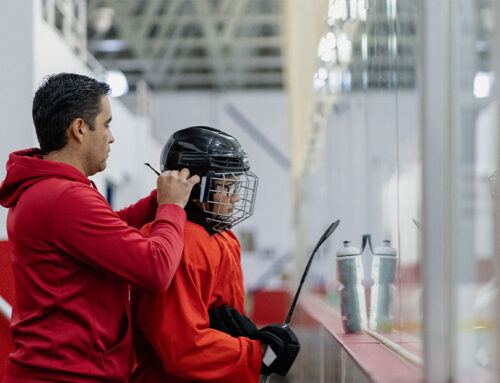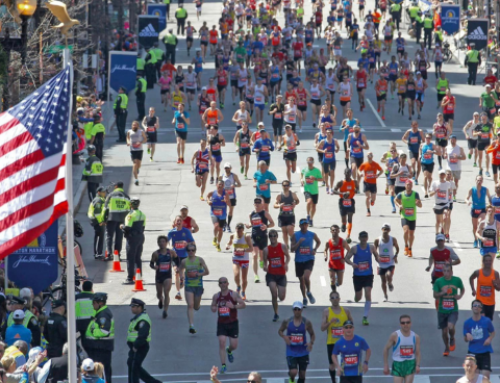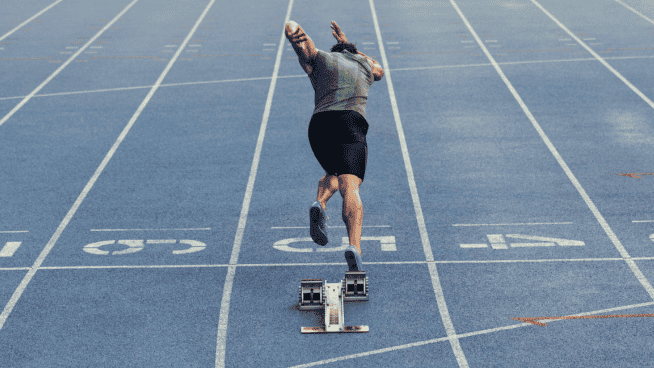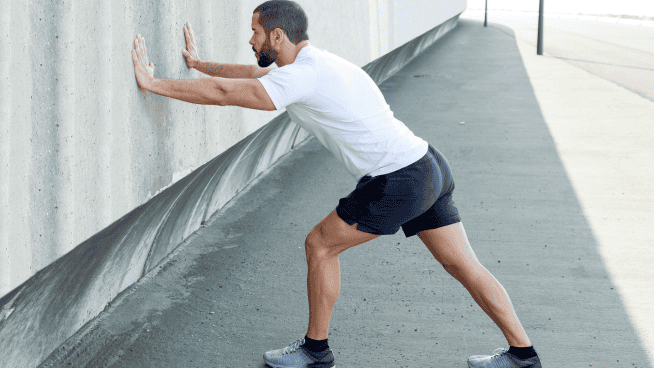5 Weight Room Exercises To Develop Speed In Youth Athletes
Developing speed can be a tricky task. Multiple factors need to be considered from an individual and training perspective to do it optimally.
Strength is the base for several athletic attributes, including speed, and while getting stronger will not guarantee an increase in speed, considering the youth athlete it is a great start. Increasing strength on a fundamental level will certainly help younger, less experienced athletes get faster. This new strength will help increase their ability to create more force while sprinting and lead to an overall increase in their athletic performance ability and potential.
When discussing speed and the weight room, it needs to be said that the weight room is meant to supplement and aid the youth athlete’s speed development. If maximum strength was the only quality important for speed development, then powerlifters would be Olympic track stars. Youth athletes still need to sprint at a high quality and participate in other training movements such as various skips, jumps, and bounds. No lift can come close to replicating the speeds met during these exercises, so they absolutely can not be neglected.
With that being said, including a steady staple of these five additional weight room exercises will help youth athletes increase their potential for speed.
Hex Bar Deadlift
The king of weight-room exercises for the youth athlete, the hex bar deadlift is great for total body strength, especially targeting the lower body. Even when cueing this exercise, I will often tell the athletes to drive their feet into the ground as hard as possible. This cue helps them focus on the lower body, building up the strength and muscles of the posterior chain to help them sprint more efficiently.
Perform for low to moderate reps (3-6) to ensure the quality of the exercise remains high. I also recommend starting at a lower intensity or weight to keep technique and safety the number one priority.
Suppose your athletes aren’t quite ready, or you don’t have access to a hex bar. In that case, you can also perform this movement with a kettlebell to help better master the technique or just serve as a substitute.
Dumbbell Romanian Dead Lift (RDL)
Few exercises can do quite as good of a job as the dumbbell RDL. The RDL will help athletes feel the engagement and strengthen the hamstrings and backside of the athlete, lower back, upper back, and glutes. Doing this will better equip your athletes for the demands of sprinting.
Perform for moderate to higher reps (6-12), as long as the hinge technique is performed correctly. Go down slowly to really focus on eccentrically loading the hamstrings, a method used to help create as robust hamstrings as possible to negate strains and other issues the athletes may deal with as they get older.
The RDL can also be performed with a single kettlebell to allow a better opportunity for proper technique. And you can also take a look at this article on the six progressions for the youth athlete to master the hinge pattern.
Bulgarian Split Squat
The Bulgarian split squat is fantastic for building single-leg strength and enhances hip mobility of the elevated side.
Perform for moderate reps. (6-8 each leg.), progressing to lower reps and higher intensities, weight once the athlete demonstrates control and proper movement execution. Since balance is a limiting factor for this movement, we don’t want to rush into heavier loads.
Suppose the Bulgarian split squat is too much for the athlete. In that case, performing a standard split squat instead is the next logical regression. Essentially the same movement, excluding the rear foot being elevated, with similar results.
Chin Ups
For the youth athlete, increasing relative body strength must be a major priority. Nothing builds that quite like chin-ups.
Work to have fun with this, performing for a total number of reps instead of a typical 3×5. This will allow for more quality in each rep and have the athlete go through the series at their own pace. You can also incorporate exercises like monkey bar climbs and grip switches to keep it fun, yet challenging.
If the athletes are unable to perform chin-ups, you can perform inverted rows in their place. A scalable bodyweight row exercise can help develop the strength required of the athletes to perform chin-ups.
Landmine Push Press
This final exercise, the landmine push press, helps develop total body power and coordination, an absolute must for the youth athlete to sprint fast. While the landmine push press initially seems like an upper-body movement it really involves the entire body to work in sync. The hips will sink to begin initiating the movement, leading the legs to drive up and transfer energy through the trunk and upper body to be expressed violently through the barbell.
Perform for low to moderate reps (3-8), to ensure that the bar moves fast!
While there is much more involved than just getting stronger in the weight room to get faster. The youth athlete must have the base level of strength to see their desired results and set a base for the future. These five fundamental movements are a great place to start.
RECOMMENDED FOR YOU
5 Weight Room Exercises To Develop Speed In Youth Athletes
Developing speed can be a tricky task. Multiple factors need to be considered from an individual and training perspective to do it optimally.
Strength is the base for several athletic attributes, including speed, and while getting stronger will not guarantee an increase in speed, considering the youth athlete it is a great start. Increasing strength on a fundamental level will certainly help younger, less experienced athletes get faster. This new strength will help increase their ability to create more force while sprinting and lead to an overall increase in their athletic performance ability and potential.
When discussing speed and the weight room, it needs to be said that the weight room is meant to supplement and aid the youth athlete’s speed development. If maximum strength was the only quality important for speed development, then powerlifters would be Olympic track stars. Youth athletes still need to sprint at a high quality and participate in other training movements such as various skips, jumps, and bounds. No lift can come close to replicating the speeds met during these exercises, so they absolutely can not be neglected.
With that being said, including a steady staple of these five additional weight room exercises will help youth athletes increase their potential for speed.
Hex Bar Deadlift
The king of weight-room exercises for the youth athlete, the hex bar deadlift is great for total body strength, especially targeting the lower body. Even when cueing this exercise, I will often tell the athletes to drive their feet into the ground as hard as possible. This cue helps them focus on the lower body, building up the strength and muscles of the posterior chain to help them sprint more efficiently.
Perform for low to moderate reps (3-6) to ensure the quality of the exercise remains high. I also recommend starting at a lower intensity or weight to keep technique and safety the number one priority.
Suppose your athletes aren’t quite ready, or you don’t have access to a hex bar. In that case, you can also perform this movement with a kettlebell to help better master the technique or just serve as a substitute.
Dumbbell Romanian Dead Lift (RDL)
Few exercises can do quite as good of a job as the dumbbell RDL. The RDL will help athletes feel the engagement and strengthen the hamstrings and backside of the athlete, lower back, upper back, and glutes. Doing this will better equip your athletes for the demands of sprinting.
Perform for moderate to higher reps (6-12), as long as the hinge technique is performed correctly. Go down slowly to really focus on eccentrically loading the hamstrings, a method used to help create as robust hamstrings as possible to negate strains and other issues the athletes may deal with as they get older.
The RDL can also be performed with a single kettlebell to allow a better opportunity for proper technique. And you can also take a look at this article on the six progressions for the youth athlete to master the hinge pattern.
Bulgarian Split Squat
The Bulgarian split squat is fantastic for building single-leg strength and enhances hip mobility of the elevated side.
Perform for moderate reps. (6-8 each leg.), progressing to lower reps and higher intensities, weight once the athlete demonstrates control and proper movement execution. Since balance is a limiting factor for this movement, we don’t want to rush into heavier loads.
Suppose the Bulgarian split squat is too much for the athlete. In that case, performing a standard split squat instead is the next logical regression. Essentially the same movement, excluding the rear foot being elevated, with similar results.
Chin Ups
For the youth athlete, increasing relative body strength must be a major priority. Nothing builds that quite like chin-ups.
Work to have fun with this, performing for a total number of reps instead of a typical 3×5. This will allow for more quality in each rep and have the athlete go through the series at their own pace. You can also incorporate exercises like monkey bar climbs and grip switches to keep it fun, yet challenging.
If the athletes are unable to perform chin-ups, you can perform inverted rows in their place. A scalable bodyweight row exercise can help develop the strength required of the athletes to perform chin-ups.
Landmine Push Press
This final exercise, the landmine push press, helps develop total body power and coordination, an absolute must for the youth athlete to sprint fast. While the landmine push press initially seems like an upper-body movement it really involves the entire body to work in sync. The hips will sink to begin initiating the movement, leading the legs to drive up and transfer energy through the trunk and upper body to be expressed violently through the barbell.
Perform for low to moderate reps (3-8), to ensure that the bar moves fast!
While there is much more involved than just getting stronger in the weight room to get faster. The youth athlete must have the base level of strength to see their desired results and set a base for the future. These five fundamental movements are a great place to start.










